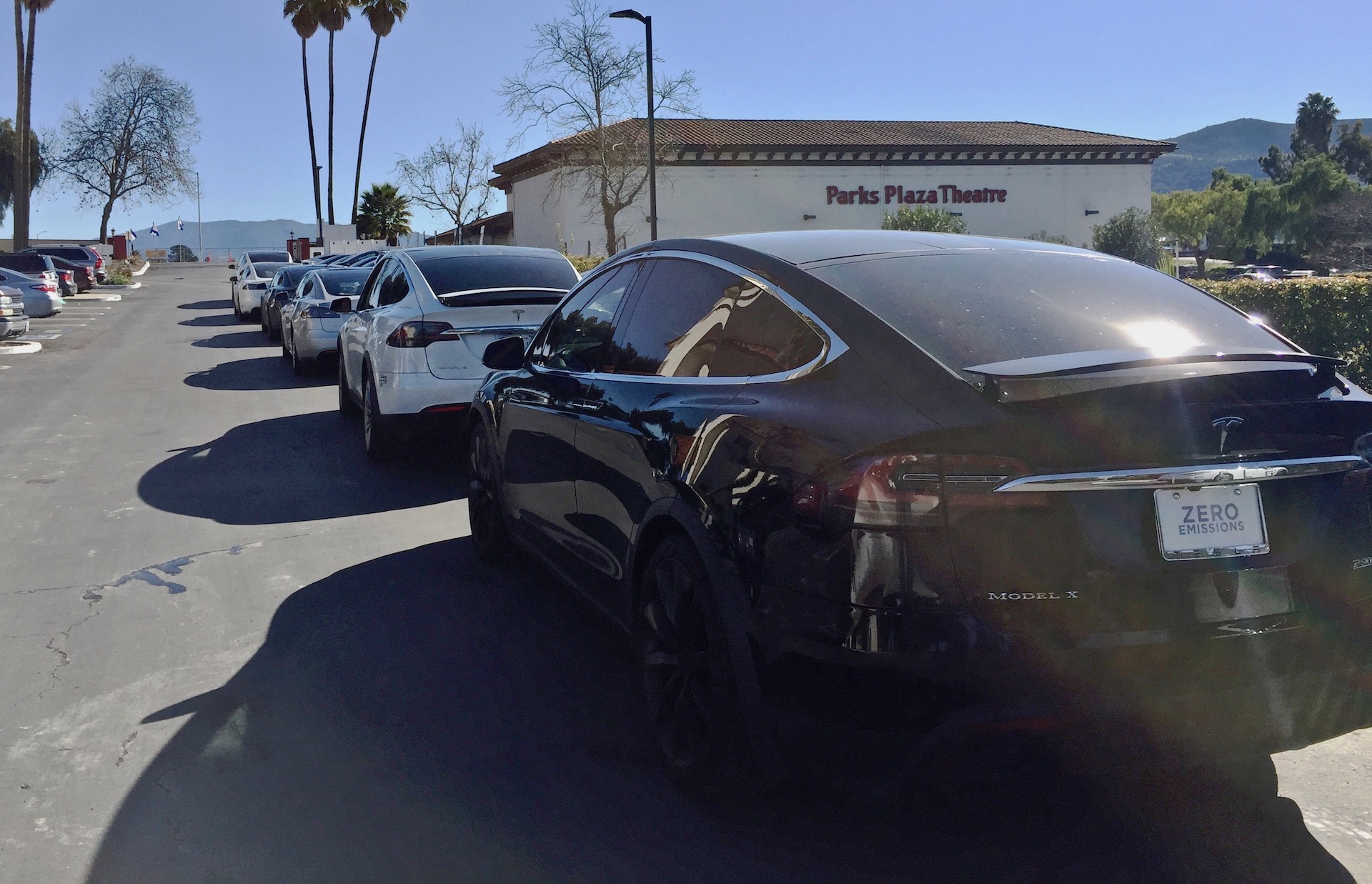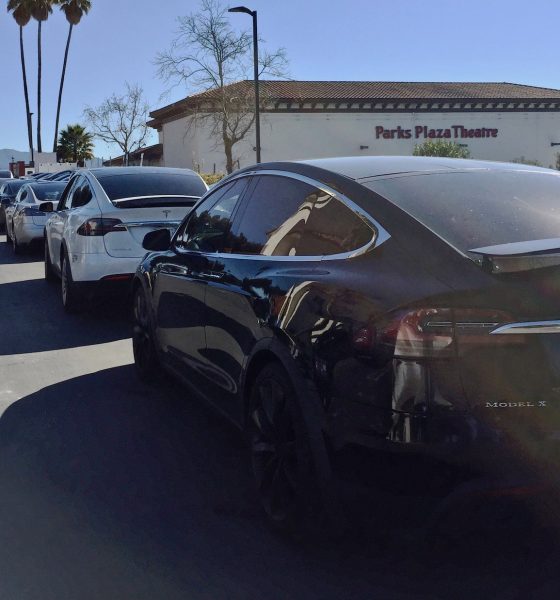

News
What will happen to Tesla Supercharger availability when Model 3 arrives?
The imminent arrival of the Tesla Model 3 has many existing Model S and Model X owners, future owners and experts asking one question: What will happen to Tesla Supercharger availability when Model 3 arrives? The latest video from Teslanomics by Ben Sullins digs into the data behind the issue and comes up with some startling findings along the way.
Current Supercharger State
As any Tesla driver knows, Supercharger stations are often full at popular routes of travel and in metropolitan cities. And depending on the time of day, and day of week, drivers looking to charge up before the next leg of their journey can sometimes come across a long queue of vehicles looking to achieve the same goal. Charge up and go.
To combat the problem, Tesla has implemented idle fees as a way to put financial pressure on drivers that linger at charging stations after they have already finished charging. Tesla also did away with unlimited free lifetime Supercharging, instead limiting all new vehicles sold after January 15, 2017 to 400 kWh per year of Supercharger use which should curb Supercharger congestion. But, there’s another problem just around the corner.
Model 3
Tesla will more than double annual production volumes when Model 3 first arrives and expects to produce 500,000 cars annually by the end of 2018.
In the face of what seems to be an insurmountable challenge, Ben at Teslanomics looked at historic Supercharger stats sourced through TMC in order to get a better idea of what drivers are in for when Model 3 arrives. Ben started the analysis by first finding the number of Tesla vehicles in each area and comparing it to the number of Supercharger stations in that same area. Q1 2015 saw the lowest worldwide vehicle to Supercharger ratio with 27.9 Tesla vehicles per charging stall. Looking at more recent data, Ben reveals that we’re currently at the worst worldwide ratio since the Supercharger network began, at an average of 39.3 Teslas per charger. This represents a 40.9% increase from two years ago.
Drilling down into US-specific data reveals a Tesla to Supercharger ratio of 48.6. But what’s most frightening is Teslanomic’s reveal that, as it stands now, there are 104.9 Tesla vehicles per Supercharger stall in California. Factoring in CEO Elon Musk’s announcement that first Model 3 deliveries will go to employees who are largely based in California facilities, followed by customers on the West Coast, it’s clear that demand will far outpace Supercharger supply in the very near future.
“there are 104.9 Tesla Model S and Model X vehicles per Supercharger stall in California”
What Can Be Done?
Tesla has said that it is doubling the number of Superchargers and quadrupling the number of destination chargers within its network this year.
While Tesla continues to produce vehicles year after year, the rate of charging network growth should theoretically be proportional to delivery numbers until we reach a saturation point, and demand for public charging stations normalizes.
For a deeper analysis of what’s to come and what needs to be done, check out the following video by Teslanomics. Let us know in our discussion forum if your area is already experiencing a Supercharging Apocalypse, or if you’re expecting something similar when Model 3 makes its way into town.

Elon Musk
Elon Musk confirms xAI’s purchase of five 380 MW natural gas turbines
The deal, which was confirmed by Musk on X, highlights xAI’s effort to aggressively scale its operations.

xAI, Elon Musk’s artificial intelligence startup, has purchased five additional 380 MW natural gas turbines from South Korea’s Doosan Enerbility to power its growing supercomputer clusters.
The deal, which was confirmed by Musk on X, highlights xAI’s effort to aggressively scale its operations.
xAI’s turbine deal details
News of xAI’s new turbines was shared on social media platform X, with user @SemiAnalysis_ stating that the turbines were produced by South Korea’s Doosan Enerbility. As noted in an Asian Business Daily report, Doosan Enerbility announced last October that it signed a contract to supply two 380 MW gas turbines for a major U.S. tech company. Doosan later noted in December that it secured an order for three more 380 MW gas turbines.
As per the X user, the gas turbines would power an additional 600,000+ GB200 NVL72 equivalent size cluster. This should make xAI’s facilities among the largest in the world. In a reply, Elon Musk confirmed that xAI did purchase the turbines. “True,” Musk wrote in a post on X.
xAI’s ambitions
Recent reports have indicated that xAI closed an upsized $20 billion Series E funding round, exceeding the initial $15 billion target to fuel rapid infrastructure scaling and AI product development. The funding, as per the AI startup, “will accelerate our world-leading infrastructure buildout, enable the rapid development and deployment of transformative AI products.”
The company also teased the rollout of its upcoming frontier AI model. “Looking ahead, Grok 5 is currently in training, and we are focused on launching innovative new consumer and enterprise products that harness the power of Grok, Colossus, and 𝕏 to transform how we live, work, and play,” xAI wrote in a post on its website.
Elon Musk
Elon Musk’s xAI closes upsized $20B Series E funding round
xAI announced the investment round in a post on its official website.

xAI has closed an upsized $20 billion Series E funding round, exceeding the initial $15 billion target to fuel rapid infrastructure scaling and AI product development.
xAI announced the investment round in a post on its official website.
A $20 billion Series E round
As noted by the artificial intelligence startup in its post, the Series E funding round attracted a diverse group of investors, including Valor Equity Partners, Stepstone Group, Fidelity Management & Research Company, Qatar Investment Authority, MGX, and Baron Capital Group, among others.
Strategic partners NVIDIA and Cisco Investments also continued support for building the world’s largest GPU clusters.
As xAI stated, “This financing will accelerate our world-leading infrastructure buildout, enable the rapid development and deployment of transformative AI products reaching billions of users, and fuel groundbreaking research advancing xAI’s core mission: Understanding the Universe.”
xAI’s core mission
Th Series E funding builds on xAI’s previous rounds, powering Grok advancements and massive compute expansions like the Memphis supercluster. The upsized demand reflects growing recognition of xAI’s potential in frontier AI.
xAI also highlighted several of its breakthroughs in 2025, from the buildout of Colossus I and II, which ended with over 1 million H100 GPU equivalents, and the rollout of the Grok 4 Series, Grok Voice, and Grok Imagine, among others. The company also confirmed that work is already underway to train the flagship large language model’s next iteration, Grok 5.
“Looking ahead, Grok 5 is currently in training, and we are focused on launching innovative new consumer and enterprise products that harness the power of Grok, Colossus, and 𝕏 to transform how we live, work, and play,” xAI wrote.
Investor's Corner
Tesla gets price target bump, citing growing lead in self-driving

Tesla (NASDAQ: TSLA) stock received a price target update from Pierre Ferragu of Wall Street firm New Street Research, citing the company’s growing lead in self-driving and autonomy.
On Tuesday, Ferragu bumped his price target from $520 to $600, stating that the consensus from the Consumer Electronics Show in Las Vegas was that Tesla’s lead in autonomy has been sustained, is growing, and sits at a multiple-year lead over its competitors.
CES 2026 validates Tesla’s FSD strategy, but there’s a big lag for rivals: analyst
“The signal from Vegas is loud and clear,” the analyst writes. “The industry isn’t catching up to Tesla; it is actively validating Tesla’s strategy…just with a 12-year lag.”
The note shows that the company’s prowess in vehicle autonomy is being solidified by lagging competitors that claim to have the best method. The only problem is that Tesla’s Vision-based approach, which it adopted back in 2022 with the Model 3 and Model Y initially, has been proven to be more effective than competitors’ approach, which utilizes other technology, such as LiDAR and sensors.
Currently, Tesla shares are sitting at around $433, as the company’s stock price closed at $432.96 on Tuesday afternoon.
Ferragu’s consensus on Tesla shares echoes that of other Wall Street analysts who are bullish on the company’s stock and position within the AI, autonomy, and robotics sector.
Dan Ives of Wedbush wrote in a note in mid-December that he anticipates Tesla having a massive 2026, and could reach a $3 trillion valuation this year, especially with the “AI chapter” taking hold of the narrative at the company.
Ives also said that the big step in the right direction for Tesla will be initiating production of the Cybercab, as well as expanding on the Robotaxi program through the next 12 months:
“…as full-scale volume production begins with the autonomous and robotics roadmap…The company has started to test the all-important Cybercab in Austin over the past few weeks, which is an incremental step towards launching in 2026 with important volume production of Cybercabs starting in April/May, which remains the golden goose in unlocking TSLA’s AI valuation.”
Tesla analyst breaks down delivery report: ‘A step in the right direction’
Tesla has transitioned from an automaker to a full-fledged AI company, and its Robotaxi and Cybercab programs, fueled by the Full Self-Driving suite, are leading the charge moving forward. In 2026, there are major goals the company has outlined. The first is removing Safety Drivers from vehicles in Austin, Texas, one of the areas where it operates a ride-hailing service within the U.S.
Ultimately, Tesla will aim to launch a Level 5 autonomy suite to the public in the coming years.








